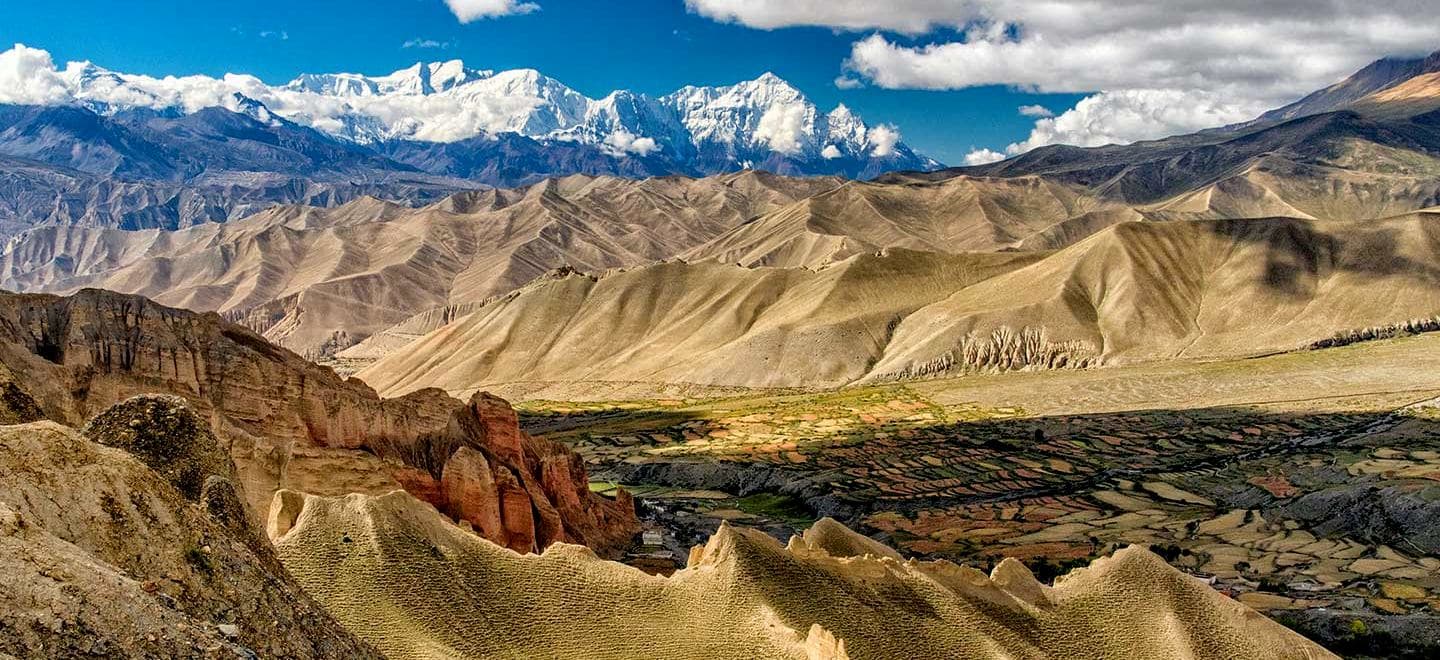Discover the diverse beauty of Nepal, a photographer's paradise, through its top 12 destinations that offer a blend of breathtaking landscapes, vibrant culture, and ancient architecture. From the historic streets of Kathmandu Valley and the serene beauty of Pokhara's lakeside to the wild terrains of Chitwan National Park and the spiritual tranquility of Lumbini, Nepal presents a myriad of photo opportunities. Venture into the Everest and Annapurna regions for high-altitude wonders, explore the unique cultures of Manang and Mustang, capture the serene Rara Lake, immerse in the greenery of Ilam's tea gardens, and marvel at the preserved beauty of Bhaktapur. Each destination in Nepal promises photographers a chance to capture stunning visuals and unforgettable moments, making it an ideal setting for a photography tour that spans from the Himalayan peaks to the cultural depths of its cities and villages.
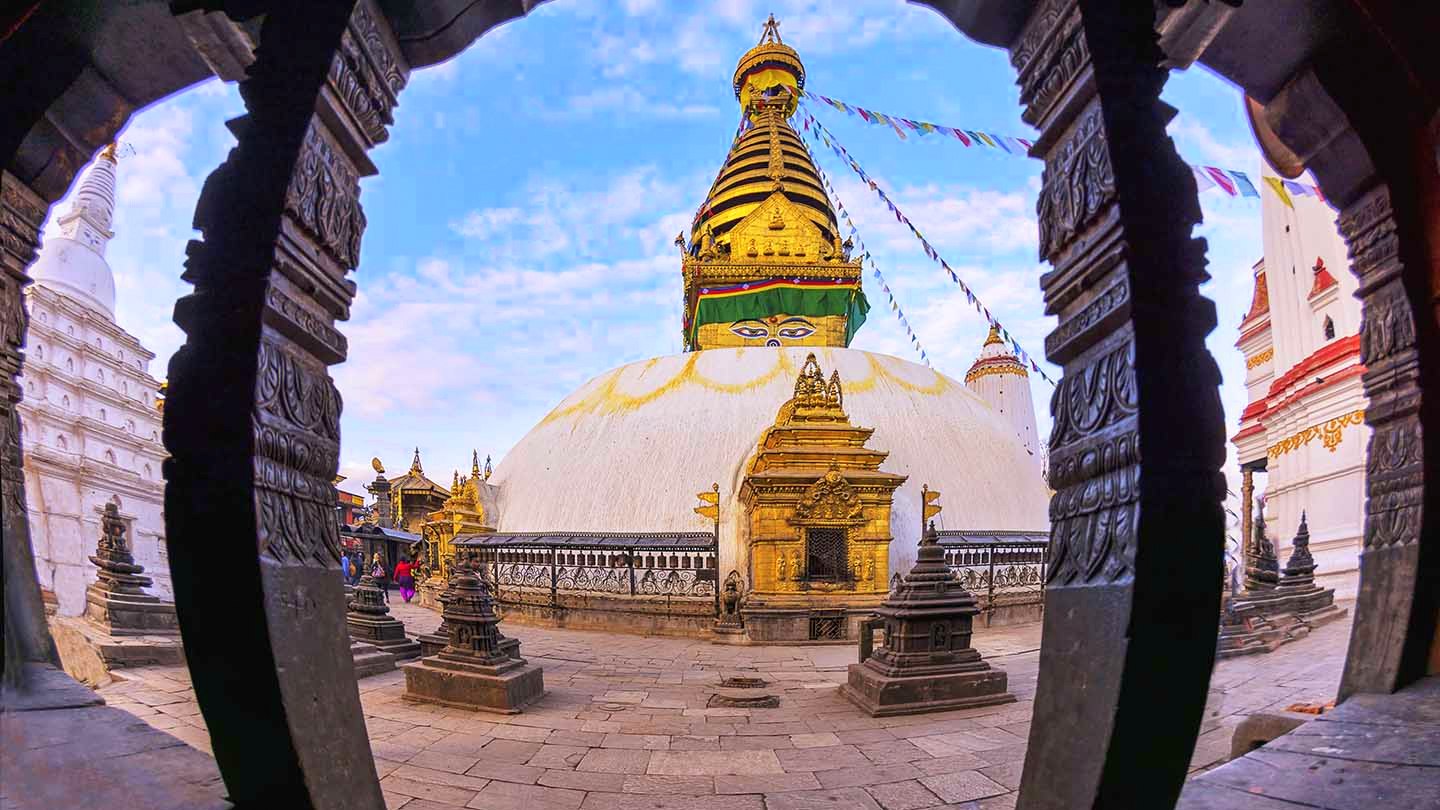
Luxury Holidays Nepal Pvt. Ltd. offers unforgettable experiences through our curated photography tours across Nepal's top 12 destinations. With a focus on luxury travel and personalized itineraries, our guests capture the essence of Nepal's stunning landscapes, rich culture, and architectural marvels. From the serene lakes of Pokhara and the historic streets of Kathmandu Valley to the majestic peaks in the Everest and Annapurna regions, our tours cater to photography enthusiasts looking to explore and photograph Nepal's diverse beauty. Our experienced guides ensure that travelers not only visit but also understand the significance of each location, including hidden gems like the tranquil Rara Lake and the lush tea gardens of Ilam. Choose Luxury Holidays Nepal for an unparalleled photography adventure in the heart of the Himalayas, where every snapshot tells a story of adventure, tranquility, and awe-inspiring beauty.
Kathmandu Valley
Kathmandu Valley, the cultural and historical heart of Nepal, is a treasure trove for photographers. This valley is not just the political and economic center of the country but also a melting pot of art, culture, and history, offering endless photographic opportunities. The valley encompasses three ancient cities: Kathmandu, Patan, and Bhaktapur, each boasting its unique charm and array of historic sites.
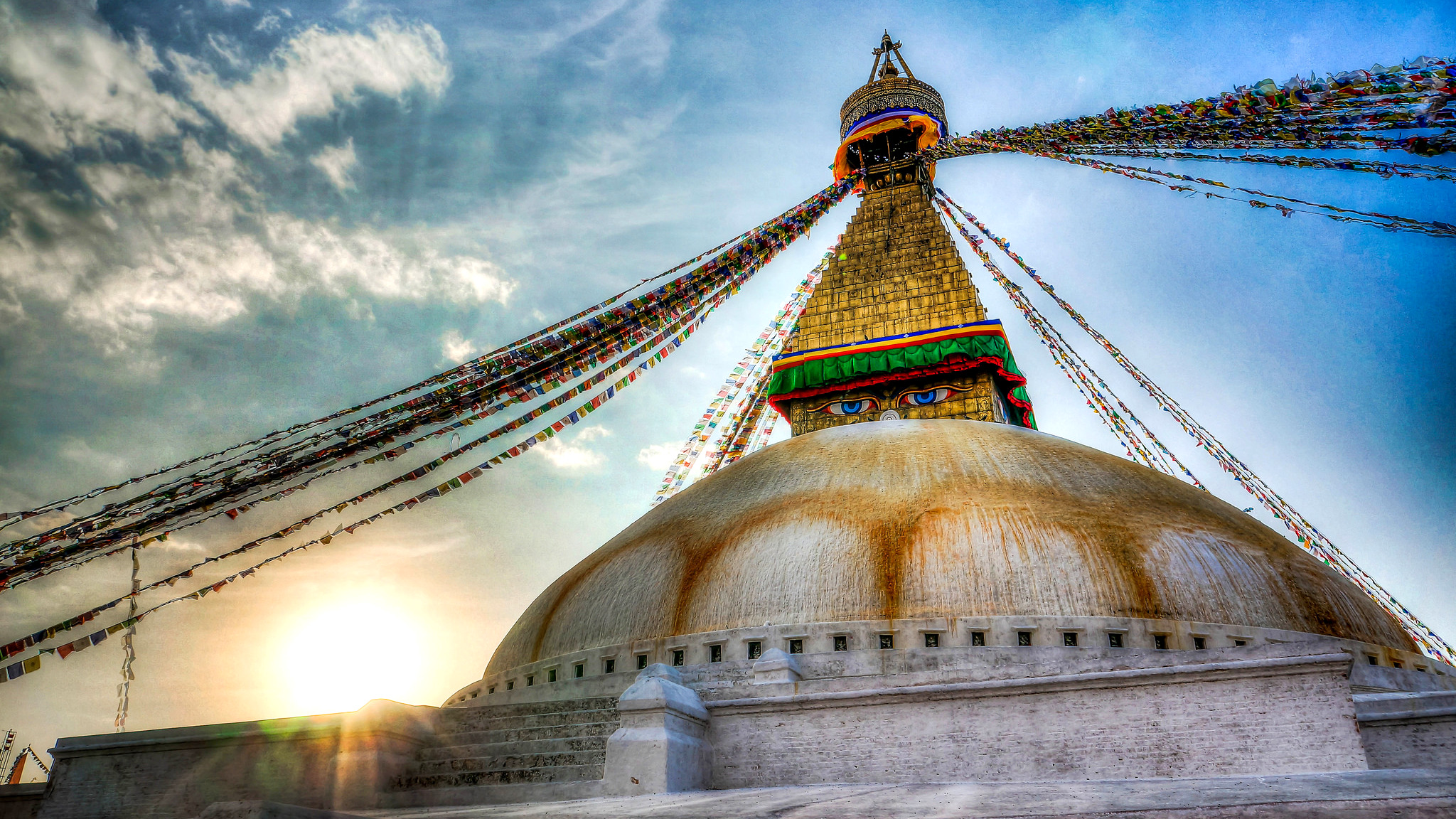
Key Highlights:
-
Durbar Squares: Kathmandu, Patan, and Bhaktapur Durbar Squares are focal points for photography, featuring royal palaces, temples, and statues that date back centuries, showcasing the architectural brilliance of the Malla Dynasty.
-
Swayambhunath and Pashupatinath: Capture the spiritual essence of Nepal with photos of Swayambhunath, the Monkey Temple, perched atop a hill overlooking the valley, and Pashupatinath, a sacred Hindu temple along the banks of the Bagmati River.
-
Boudhanath Stupa: This massive stupa is one of the largest in the world and serves as a hub of Tibetan Buddhism in Nepal, surrounded by monasteries and fluttering prayer flags.
-
Patan’s Golden Temple: A lesser-known gem, this Buddhist monastery is adorned with intricate gold work, offering unique photographic captures away from the crowds.
-
Thamel Area: For those interested in street photography, Thamel’s bustling streets, colorful shops, and vibrant nightlife provide a lively backdrop.
-
Local Festivals: Participating in and photographing local festivals like Indra Jatra, Dashain, and Tihar can add vibrant cultural dimensions to your portfolio.
-
Ancient Newari Architecture: The valley is renowned for its traditional Newari architecture, characterized by ornately carved wooden windows and brick buildings that tell the tales of Nepal’s rich cultural past.
Photographing Kathmandu Valley is an exploration of Nepal’s soul, capturing the essence of its rich history, vibrant culture, and spiritual depth. Whether you are drawn to the ancient temples, the lively streets, or the serene natural landscapes that surround the valley, Kathmandu offers a myriad of scenes waiting to be captured.
Pokhara
Pokhara, a serene city nestled against the backdrop of the Annapurna range, offers a tranquil escape and stunning photographic opportunities. Known as the gateway to the treks in the Annapurna region, it's not just a starting point for adventurers but a destination rich in natural beauty and cultural experiences.

Key Highlights:
-
Phewa Lake: The second-largest lake in Nepal, Phewa Lake, is the heart of Pokhara, with its calm waters reflecting the mountains. The Tal Barahi Temple, located on an island in the lake, adds a spiritual dimension to the landscape.
-
Sarangkot: For breathtaking sunrise and sunset views over the Himalayas, Sarangkot is unmatched. Photographers can capture the changing colors of the sky against the mountain peaks.
-
World Peace Pagoda: Built atop a hill overlooking the city and Phewa Lake, the World Peace Pagoda offers panoramic views of Pokhara and its surroundings, ideal for wide landscape shots.
-
Devi’s Fall and Gupteshwor Cave: These natural wonders near Pokhara provide unique geological formations and a chance to capture the power and beauty of nature.
-
Adventure Sports: Paragliding, zip-lining, and ultra-light flights offer unique perspectives of Pokhara from the air, perfect for aerial photography.
-
Local Culture: The old bazaar of Pokhara reflects the rich cultural heritage of the region, with traditional architecture, local markets, and temples that tell the story of the city's past.
Pokhara's blend of natural beauty, adventure opportunities, and cultural richness makes it a compelling destination for photographers. Whether capturing the tranquility of Phewa Lake, the majesty of the Annapurna range, or the vibrancy of local life, Pokhara offers diverse scenes that can add depth and variety to any photographic portfolio.
Chitwan National Park
Chitwan National Park, Nepal's first national park and a UNESCO World Heritage site since 1984, stands as a beacon of biodiversity and natural beauty in the subtropical lowlands of the Terai region. This park is a haven for wildlife enthusiasts and photographers alike, offering a glimpse into the lives of some of the most elusive and endangered species on the planet.
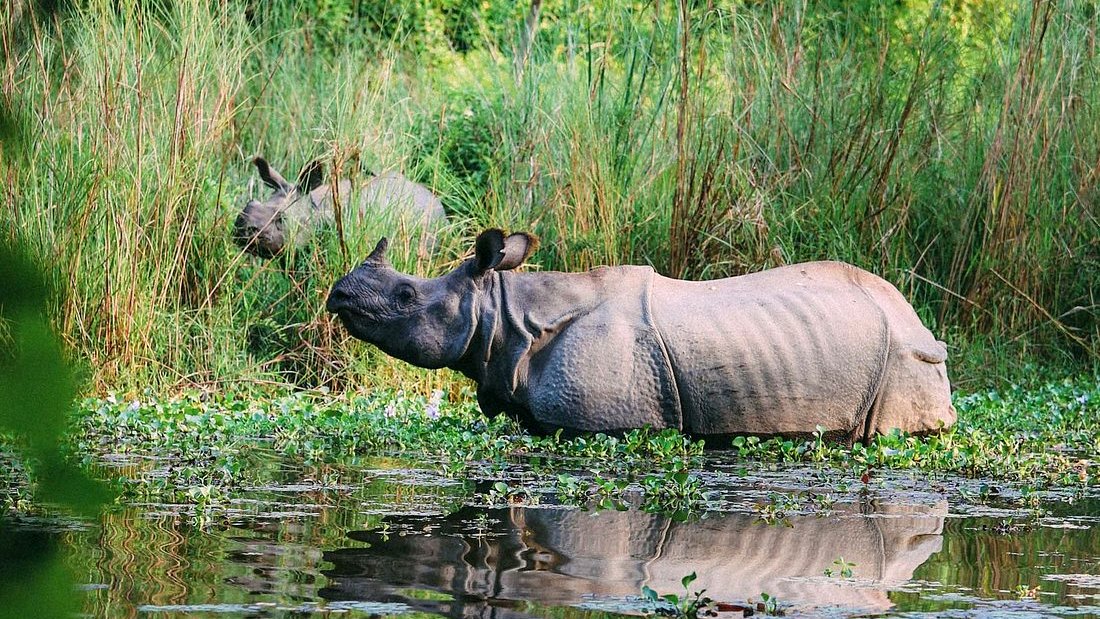
Key Highlights:
-
Wildlife: The park is renowned for its protection of the one-horned rhinoceros, Royal Bengal tiger, and Asian elephant. Safaris offer the chance to photograph these magnificent creatures in their natural habitat, along with other inhabitants like gharials, mugger crocodiles, deer, and over 500 bird species.
-
Jeep and Elephant Safaris: Jeep safaris provide a secure way to explore the deeper parts of the park, while elephant-back safaris offer a unique perspective and closer encounters with wildlife, all great opportunities for wildlife photography.
-
Canoe Trips: A serene canoe trip down the Rapti or Narayani River can yield stunning photographs of aquatic birds, crocodiles basking on the banks, and the lush, dense forest landscape.
-
Tharu Villages: The indigenous Tharu people have a unique culture and lifestyle, adapted to living in close proximity to the jungle. Photographing the Tharu villages and their traditional dances can add a rich cultural dimension to your portfolio.
-
Sunset Views: The banks of the Rapti River provide spectacular sunset views, with the changing colors of the sky reflecting on the water and silhouettes of the jungle creating a perfect backdrop.
Chitwan National Park offers an extraordinary mix of adventure, wildlife, and culture, making it a must-visit destination for photographers aiming to capture the essence of Nepal's natural heritage. The diversity of photographic subjects, from the dense jungles and wide rivers to the rare and endangered species and the local communities, makes Chitwan a place where every snapshot tells a story of conservation, beauty, and the delicate balance between humans and nature.
Lumbini
Lumbini, revered as the birthplace of Siddhartha Gautama, the Lord Buddha, is a monumental destination that offers a unique blend of spiritual tranquility and rich historical significance. This UNESCO World Heritage site, located in the Rupandehi District of Nepal, attracts pilgrims and photographers from around the world, drawn to its peaceful landscapes and sacred architecture.
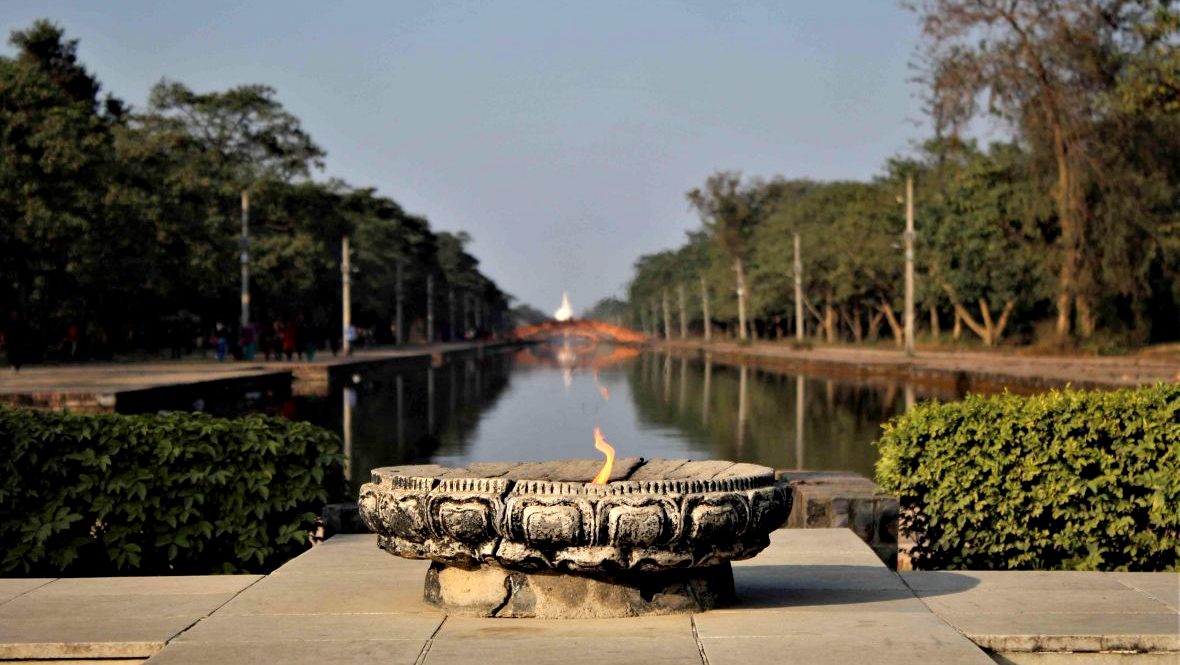
Key Highlights:
-
Mayadevi Temple: Central to Lumbini, the Mayadevi Temple is believed to be the exact spot where Queen Mayadevi gave birth to Buddha. The temple, along with the sacred pond nearby, where Buddha had his first bath, offers serene settings for photography.
-
Ashoka Pillar: Erected by Emperor Ashoka in 249 BC to mark the birthplace of Buddha, this pillar is a testament to Lumbini’s historical and spiritual importance. Its inscriptions and the surrounding garden provide a peaceful backdrop for contemplative photos.
-
Monastic Zone: Divided into the eastern and western zones for Theravada and Mahayana monasteries respectively, this area showcases a diversity of Buddhist architecture from around the world, offering a myriad of photographic subjects that represent the global Buddhist community.
-
Lumbini Garden: The expansive gardens that surround the sacred sites offer lush, landscaped spaces dotted with ponds, meditation areas, and rows of prayer flags, creating a tranquil environment perfect for capturing the essence of peace and spirituality.
-
The Eternal Peace Flame: A symbol of enlightenment and peace, the Eternal Peace Flame burns continuously and is a popular subject for photographers, especially during dusk and dawn when its glow contrasts beautifully with the natural light.
Lumbini not only provides a window into the origins of Buddhism but also offers photographers a canvas filled with expressions of faith, architecture, and the undisturbed serenity of a place that has drawn seekers and scholars for centuries. The juxtaposition of ancient artifacts and modern monuments against the backdrop of a tranquil natural setting makes Lumbini a compelling destination for capturing images that speak to the spiritual and historical journey of humanity.
Everest Region
The Everest Region, often heralded as the pinnacle of trekking destinations offers some of the most spectacular landscapes on earth. Dominated by Mount Everest, the highest peak in the world, this region is not just a journey through stunning geography but also an insight into the vibrant culture of the Sherpa people, making it a photographer's dream.
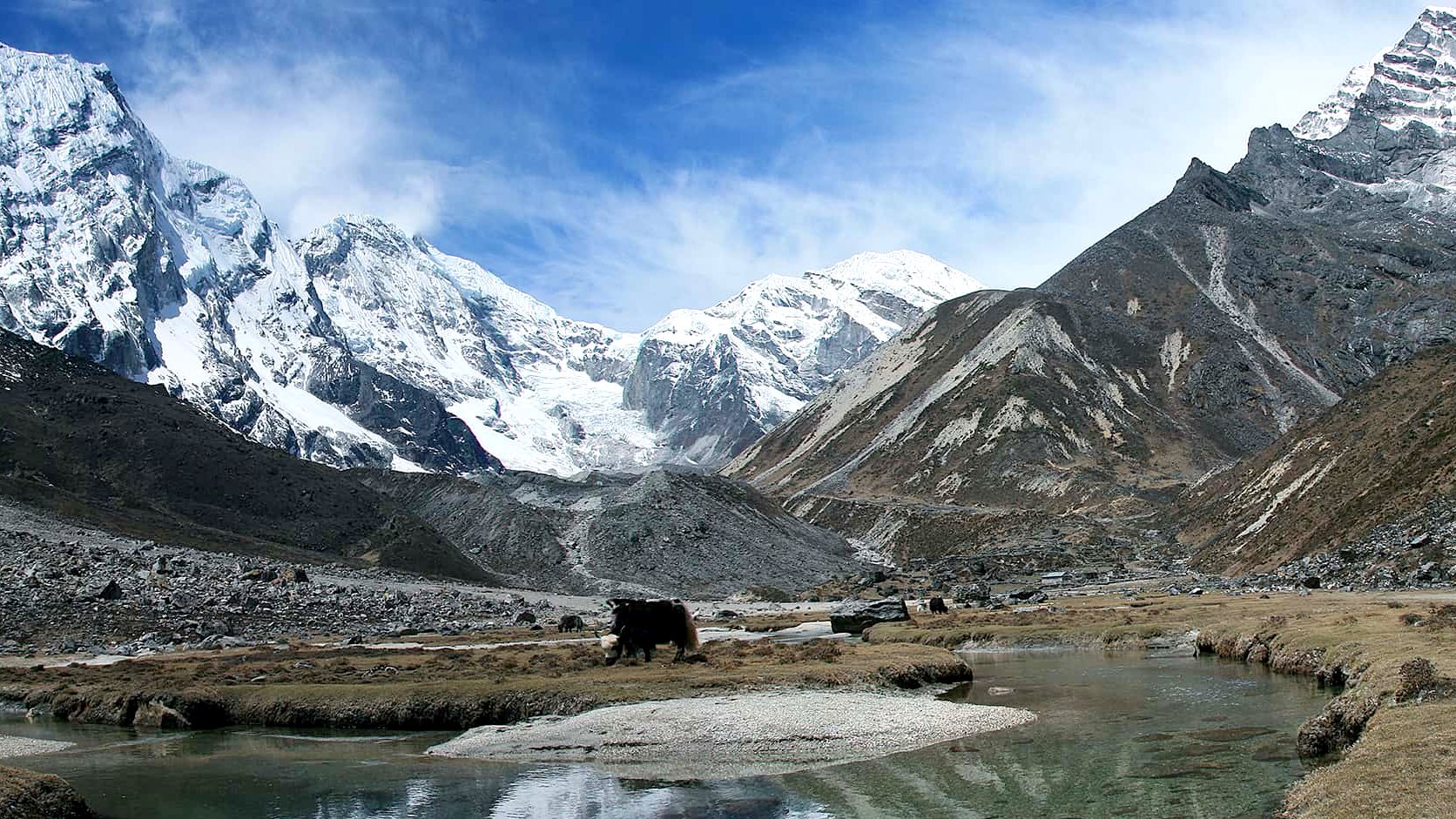
Key Highlights:
-
Everest Base Camp (EBC): Trekking to EBC is an experience like no other, providing awe-inspiring views of Mount Everest and surrounding peaks such as Lhotse, Nuptse, and Ama Dablam. The journey itself, through rugged trails and vibrant Sherpa villages, offers countless photographic opportunities.
-
Kala Patthar: Often considered the best vantage point for up-close views of Mount Everest, Kala Patthar offers panoramic sunrise and sunset views of the Himalayas, a moment many photographers aim to capture.
-
Tengboche Monastery: Situated on a hill at the confluence of the Dudh Koshi and the Imja Khola rivers, Tengboche Monastery provides a serene backdrop with its traditional Sherpa architecture and stunning mountain views. It's an excellent place for cultural and landscape photography.
-
Namche Bazaar: Known as the gateway to the high Himalayas, this bustling town is full of life, and colorful markets, and offers unique views of the surrounding peaks. The blend of natural beauty and cultural vibrancy makes it a compelling subject for photographers.
-
Sherpa Culture: The Everest Region is home to the Sherpa community, known for their mountaineering prowess and rich cultural heritage. Photographing the daily lives, festivals, and traditional houses of the Sherpa people adds a deep cultural dimension to any portfolio.
-
Sagarmatha National Park: This UNESCO World Heritage Site is home to diverse flora and fauna, including the elusive snow leopard and the Himalayan tahr. The varied ecosystems within the park provide ample opportunities for wildlife photography.
The Everest Region is a symphony of towering peaks, glacial landscapes, and vibrant Sherpa villages, offering an unparalleled photographic journey. From capturing the ethereal beauty of the Himalayas to documenting the rich tapestry of Sherpa culture, photographers can find endless inspiration in the shadow of Mount Everest.
Annapurna Region
The Annapurna Region is celebrated for its accessibility and the sheer variety of landscapes it offers. From lush subtropical valleys and forests to high-altitude deserts and the towering Annapurna Massif, this area provides endless opportunities for photographers to capture the diverse beauty of Nepal.
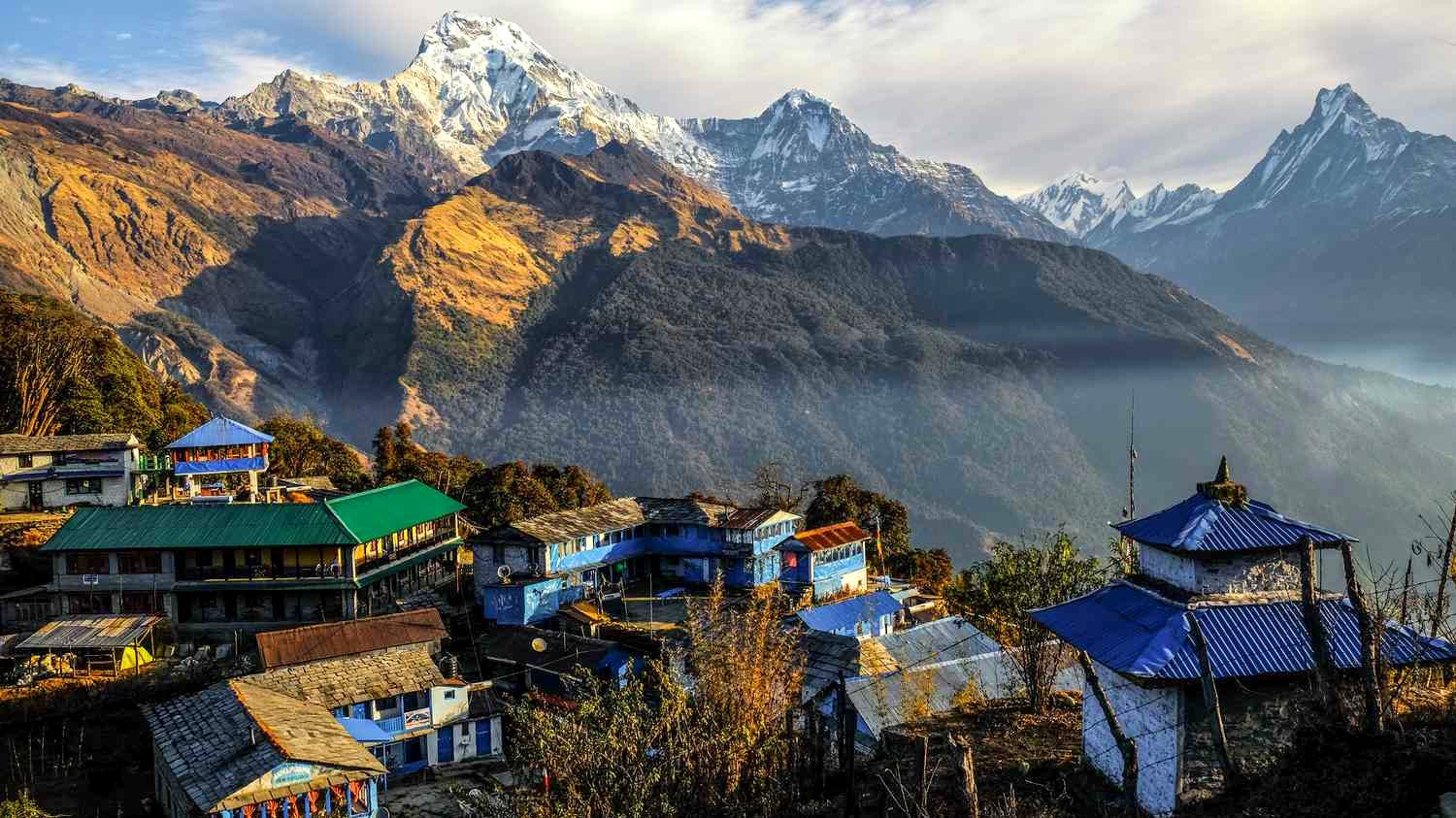
Key Highlights:
-
Annapurna Circuit: This iconic trek encircles the Annapurna Massif, offering varied scenery that changes from green rice paddies and forests to arid cliffs and alpine landscapes. Each turn on the trail presents a new photographic vista.
-
Annapurna Base Camp (ABC): Trekking to ABC brings photographers into close proximity with the massive peaks of Annapurna I, Annapurna South, Machapuchare, and Hiunchuli. The base camp itself offers dramatic sunrise and sunset views over these giants.
-
Poon Hill: Known for its spectacular sunrise views, Poon Hill provides a panoramic vista of the Annapurna and Dhaulagiri ranges. The early morning light bathing the snow-capped peaks in soft hues is a moment cherished by photographers.
-
Machapuchare (Fishtail) Mountain: Revered by the local population and off-limits to climbers, Machapuchare is known for its distinctive fishtail-shaped peak, providing a stunning subject against the backdrop of Nepal’s deep blue skies.
-
Local Culture: The trails wind through traditional Gurung and Magar villages, where photographers can capture the daily life, ancient traditions, and warm hospitality of Nepal's mountain communities.
-
Flora and Fauna: Rhododendron forests, the national flower of Nepal, bloom vibrantly in spring, carpeting the landscape in vivid colors. The region is also rich in wildlife, including the elusive snow leopard in the higher altitudes.
The Annapurna Region offers a mix of natural beauty, cultural richness, and adventure. For photographers, it's a paradise where every corner reveals new subjects to capture, from the grandeur of towering peaks to the intimate details of daily life in remote villages. The region's diversity not only appeals to landscape and wildlife photographers but also to those interested in cultural and documentary projects.
Manang and Mustang
Manang and Mustang, two distinct regions within Nepal, offer starkly different landscapes and cultural experiences, both rich in photographic potential. Manang, part of the Annapurna Circuit, showcases high-altitude landscapes and Tibetan Buddhist culture, while Mustang, known as the Last Forbidden Kingdom, reveals arid landscapes reminiscent of the Tibetan plateau, with a deep-rooted Tibetan Buddhist culture.

Manang highlights include the serene Gangapurna Lake, the remote village of Tilicho Lake, one of the highest lakes in the world, and the ancient Braga Monastery, offering insights into the spiritual life in the Himalayas. The landscape transitions from lush green valleys to stark, rocky terrain as one moves higher, providing diverse backdrops for photographers.
Mustang is famous for its walled capital, Lo Manthang, which houses centuries-old monasteries rich in art and history. The region's dramatic desert landscapes, characterized by deep canyons and unusual rock formations, contrast sharply with the snow-capped peaks in the background. Mustang's annual Tiji Festival is a visual spectacle, with colorful costumes and masked dances that celebrate the triumph of good over evil.
Both regions are sparsely populated, with communities living in harmony with the harsh environment. These areas offer photographers the chance to capture the untouched beauty of the landscape, the architectural uniqueness of the monasteries and villages, and the daily lives of the people who inhabit these remote parts of Nepal. Manang and Mustang are treasures for those interested in landscape, cultural, and adventure photography, providing unique perspectives on the natural beauty and cultural richness of Nepal.
Rara Lake
Rara Lake, the largest lake in Nepal, is a pristine natural wonder located in the remote northwestern part of the country, within Rara National Park. This high-altitude lake, sitting at an elevation of about 2,990 meters (9,810 feet), is known for its astonishingly clear blue waters that reflect the surrounding snow-capped Himalayan peaks. The tranquil beauty of Rara Lake, combined with the rich biodiversity of the national park, makes it a captivating destination for photographers.

Key Highlights:
- Stunning Lake Views: The crystal-clear waters of Rara Lake, changing colors with the seasons, offer mesmerizing scenes against the backdrop of dense pine and juniper forests and towering mountains.
- Biodiversity: Rara National Park is home to a variety of flora and fauna, including rare species like the red panda and musk deer. Birdwatchers can find a haven here, with numerous species of birds, making it an excellent spot for wildlife photography.
- Cultural Insights: The area around Rara Lake is inhabited by communities with rich traditions and cultures. Photographers have the opportunity to capture the essence of life in Nepal's remote regions, documenting the unique lifestyles and traditions of the local people.
- Trekking Trails: The journey to Rara Lake involves trekking through remote and untouched landscapes, offering unparalleled opportunities to photograph the rugged beauty of the region, with its serene valleys, verdant hills, and traditional villages.
Rara Lake's isolated location means it sees fewer visitors compared to Nepal's more accessible destinations, offering a peaceful and unspoiled setting for photographers. The contrast between the serene, vast lake and the rugged wilderness of the surrounding area provides a multitude of perspectives for both landscape and cultural photography. Capturing the dawn and dusk light playing on the lake's surface or the daily activities of the local communities can be especially rewarding, making Rara Lake a must-visit for those looking to explore Nepal's hidden natural treasures.
Ilam
Ilam, often celebrated for its verdant landscapes and sprawling tea gardens, is a picturesque district in eastern Nepal that captivates visitors with its natural beauty and tranquil ambiance. This region is distinguished by its rolling hills covered in a lush carpet of tea leaves, offering a refreshing contrast to the snow-capped peaks commonly associated with Nepal.
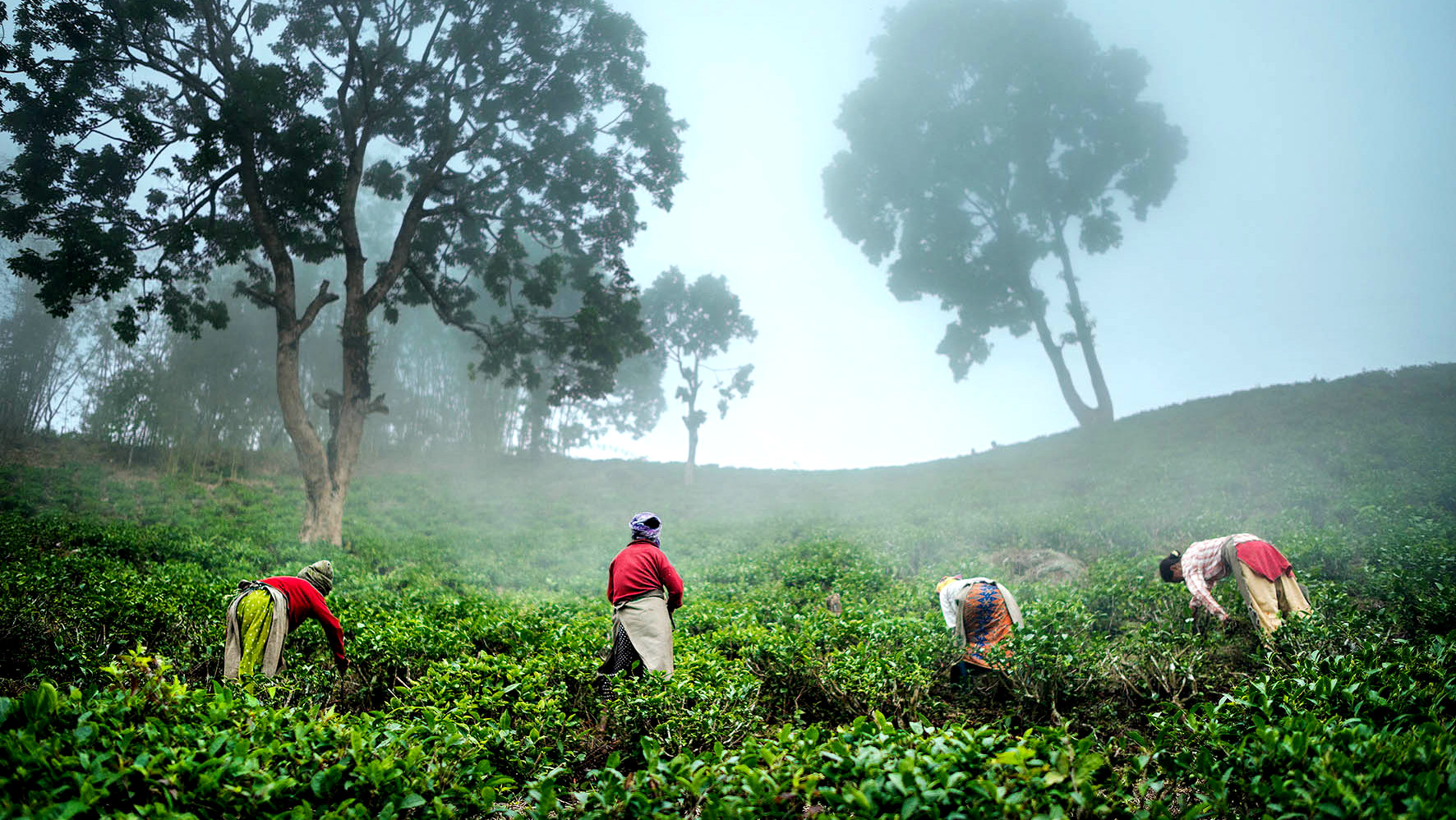
Key Highlights:
- Tea Gardens: Ilam is synonymous with tea production, and its hillsides are adorned with endless rows of tea bushes. The tea gardens of Kanyam and Fikkal are particularly famous, providing stunning green vistas and opportunities for photographers to capture the essence of Nepal's tea culture.
- Antu Danda: Offering breathtaking views of both sunrise and sunset, Antu Danda is a prime location for landscape photography, with panoramas that stretch across vast tea plantations to the distant Himalayas.
- Mai Pokhari: This natural lake is surrounded by dense forests, creating a serene and mystical setting. The area is a biodiversity hotspot, home to rare flora and fauna, making it a great location for nature and wildlife photography.
- Traditional Practices: The region’s rich cultural heritage, exemplified in its traditional methods of tea farming and processing, offers a glimpse into the local lifestyle, presenting unique photo opportunities of rural life in Nepal.
Ilam's combination of natural beauty, cultural richness, and the serene landscapes of its tea gardens make it a photographer's delight. Whether capturing the early morning mist rolling over the tea leaves, the intricate patterns of the plantations, or the daily life of the tea farmers, Ilam offers a variety of subjects that showcase a different side of Nepal's diverse landscape.
Bhaktapur
Bhaktapur, a gem among Nepal's ancient Newari cities, stands out for its well-preserved medieval art, architecture, and culture. This UNESCO World Heritage Site, located in the Kathmandu Valley, offers a vivid glimpse into Nepal's rich historical heritage, making it a prime destination for photographers interested in capturing the essence of traditional Nepalese life and architecture.
Key Highlights:
- Durbar Square: The heart of Bhaktapur, Durbar Square, is lined with spectacular examples of palaces, temples, and statues dating back to the Malla Kingdom. The intricately carved 55 Window Palace and the majestic Nyatapola Temple dominate the square, offering endless photographic compositions.
- Peacock Window: This exquisite wooden window, a masterpiece of Newari craftsmanship, symbolizes the artistic heritage of Bhaktapur and provides a captivating subject for detailed architectural photography.
- Pottery Square: A visit to Pottery Square reveals artisans shaping clay into various forms, using age-old techniques. Capturing the potters at work against the backdrop of sun-dried pottery offers a unique insight into the traditional crafts of Nepal.
- Taumadhi Square: Home to the towering Nyatapola Temple and the Bhairavnath Temple, Taumadhi Square presents a blend of architectural grandeur and bustling city life, providing dynamic street scenes and architectural details to photograph.
- Festivals and Daily Life: Bhaktapur's vibrant festivals, such as Bisket Jatra and Gai Jatra, along with the daily activities of its residents, offer photographers the chance to capture the city's lively cultural expressions and traditions.
Bhaktapur's rich cultural tapestry, combined with its ancient architecture and the daily lives of its inhabitants, makes it an unparalleled location for photographers aiming to delve into Nepal's historical and cultural depths. The city's timeless beauty, characterized by its narrow alleys, red brick buildings, and traditional lifestyles, provides a compelling narrative of preservation and tradition amidst the modern world.
Langtang Region
The Langtang Region, a tranquil and less trodden path nestled close to the Tibetan border, is a blend of natural splendor and cultural richness, making it a fascinating destination for photographers. This region offers a journey through lush forests, rugged landscapes, and ancient villages, set against the backdrop of the magnificent Himalayas.
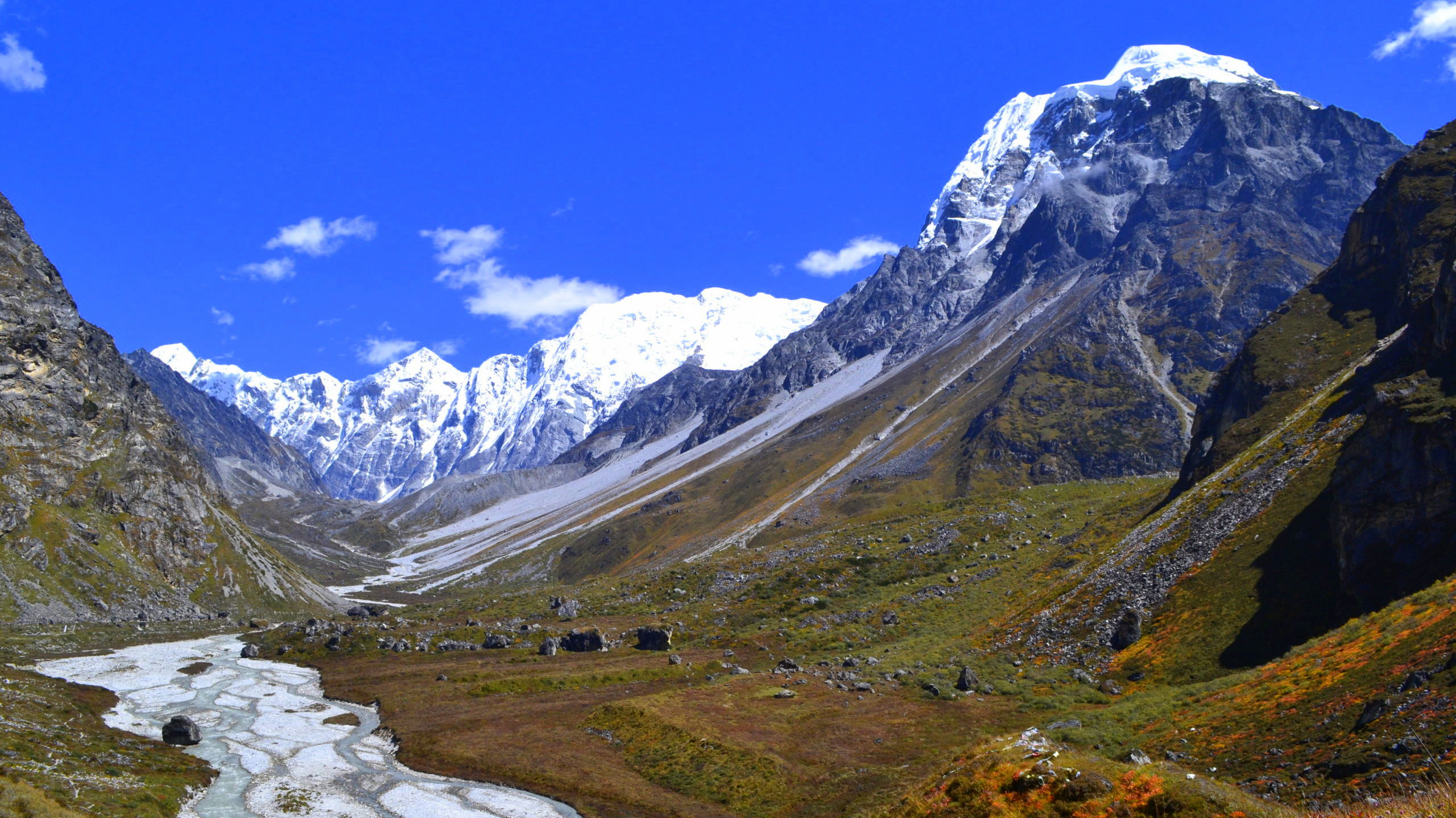
Key Highlights:
- Langtang Valley: Known as "the valley of glaciers," this area provides stunning views of Langtang Lirung, Langtang Ri, and more. The valley's terrain, scattered with traditional Tamang villages, offers a blend of natural beauty and cultural depth.
- Kyanjin Gompa: A small monastery located in a village of the same name, Kyanjin Gompa sits at the base of Langtang Lirung. Photographers can capture the essence of Tibetan Buddhist culture against a dramatic mountainous backdrop.
- Langtang National Park: Home to diverse wildlife such as the red panda, Himalayan tahr, and various bird species, the park's rich biodiversity offers ample opportunities for wildlife photography amidst stunning landscapes.
- Tserko Ri: For those willing to trek further, the climb to Tserko Ri unveils breathtaking panoramic views of the Langtang range. Sunrise and sunset here provide mesmerizing lighting for landscape photography.
- Tamang Heritage Trail: Offering insights into the lives and traditions of the Tamang people, this trail highlights the cultural aspect of the Langtang Region. Traditional architecture and daily life scenes present rich subjects for cultural photography.
The Langtang Region's unique combination of natural beauty, wildlife, and cultural heritage, all within a relatively accessible yet remote part of Nepal, provides photographers with a diverse canvas to explore. From grand landscapes and intimate wildlife encounters to the profound simplicity of mountain life, the region offers countless moments waiting to be captured, telling stories of resilience, beauty, and the enduring spirit of the Himalayan communities.
Kanchenjunga Area
The Kanchenjunga Area, named after the world's third-highest mountain, Mount Kanchenjunga, is a sanctuary of sublime natural beauty and splendid isolation in eastern Nepal. This region offers an unparalleled trekking and photography experience for those drawn to the allure of the Himalayas, away from the more frequented trails.
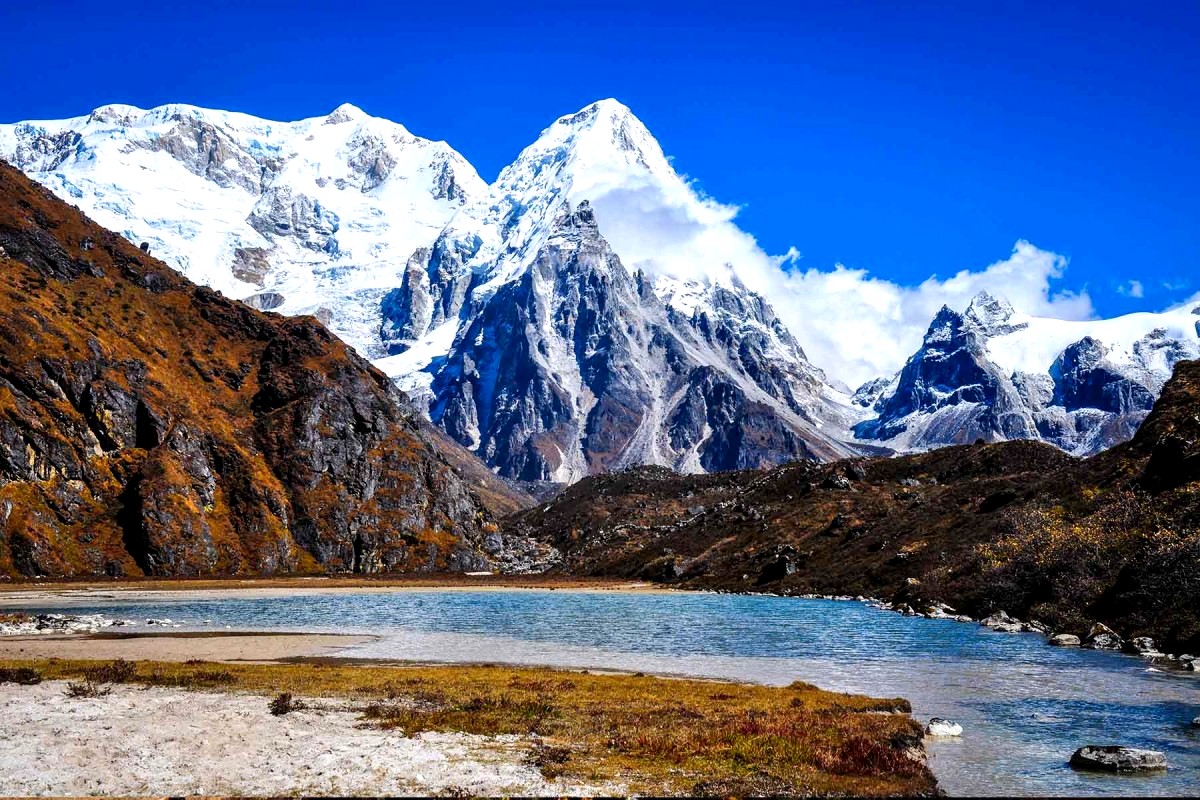
Key Highlights:
- Diverse Landscapes: From lush rhododendron forests and high alpine meadows to dramatic glaciers and the imposing massif of Kanchenjunga itself, the area's varied landscapes provide a spectacular backdrop for photographers.
- Kanchenjunga Base Camps: The trek to the North and South Base Camps of Kanchenjunga is a journey through remote wilderness, offering stunning views of the mountain's towering peaks and the surrounding Himalayas, perfect for capturing the raw beauty of nature.
- Rich Biodiversity: The Kanchenjunga Conservation Area is home to diverse flora and fauna, including rare species like the snow leopard, red panda, and Himalayan black bear, presenting opportunities for wildlife photography.
- Cultural Diversity: The region is inhabited by a mix of ethnic groups, including the Limbu, Sherpa, and Rai communities. Their vibrant cultures, traditional practices, and festivals offer a deep dive into the human element of the Himalayas, providing rich content for cultural and documentary photography.
- Remote Villages: Trekking through the Kanchenjunga Area allows for encounters with the daily lives of people in some of Nepal's most remote villages, where traditional ways of life are still preserved. These encounters offer intimate moments for photographers to capture the essence of rural Nepalese life.
The Kanchenjunga Area's remoteness adds to its charm, making it a destination for those seeking solitude and unspoiled natural beauty. Photographers venturing into this region can expect to bring back unique images that capture the spirit of one of the world's most majestic mountain ranges, along with the diverse ecosystems and cultures that surround it.
Best Time for the Photography Tour in Nepal
The best time for a photography tour in Nepal largely depends on what you want to capture and the regions you plan to visit. However, the two most favorable periods for photography tours across most of Nepal are during the autumn and spring seasons when the skies are clearer, and the views are unobstructed.
Autumn (September to November):
- This season offers clear blue skies, providing crisp mountain views, which is ideal for landscape photography in the Himalayas, including Everest, Annapurna, and Langtang regions.
- The post-monsoon greenery adds vibrance to the landscapes, enhancing the natural beauty of both highland and lowland areas.
- Autumn is also a time for major festivals in Nepal, such as Dashain and Tihar, offering rich cultural photography opportunities.
Spring (March to May):
- Spring is renowned for the blooming of rhododendrons and other wildflowers, adding spectacular colors to the forests and hills, particularly in the Annapurna and Langtang regions.
- The weather is warmer, and the skies remain clear, especially in the mornings, offering excellent conditions for both mountain and cultural landscapes.
- Wildlife in national parks like Chitwan and Bardia is more active, making it a great time for wildlife photography.
Considerations for Other Seasons:
- Winter (December to February) can offer clear skies and fewer tourists, but colder temperatures and snow may limit access to higher elevations. However, it's an excellent time for capturing snow-capped landscapes and attending winter festivals.
- Summer/Monsoon (June to August) presents challenges with rain and clouds obscuring mountain views. Yet, it's a period when landscapes turn lush green, and agricultural activities peak, offering a different perspective on rural life and nature.
Ultimately, the best time for a photography tour in Nepal depends on your specific interests and the subjects you wish to focus on. Each season brings its own unique beauty and challenges, providing diverse opportunities for photographers to capture Nepal's multifaceted charm.
Tips for the Photography Tour in Nepal
A photography tour in Nepal is an adventure that offers an abundance of diverse subjects, from the world's highest peaks and lush landscapes to rich cultural festivities and ancient architecture. Here are some tips to make the most of your photography tour in Nepal:
-
Research and Plan: Research your destinations thoroughly. Knowing the best times for sunrise and sunset, as well as cultural events and festivals, can help you capture the most compelling images.
-
Gear Up Appropriately: Bring a sturdy tripod for long exposure shots and landscapes. A variety of lenses can help capture everything from wide landscapes to detailed portraits. Don't forget extra batteries and memory cards, as charging facilities can be scarce in remote areas.
-
Respect Local Culture: Always ask for permission before photographing people. Understanding and respecting local customs and traditions can also open doors to more intimate and authentic photography opportunities.
-
Be Ready for Varied Lighting Conditions: Nepal's diverse topography means lighting conditions can change rapidly, especially in the mountains. Be prepared to adjust your camera settings accordingly and consider using filters to manage harsh sunlight or enhance skies.
-
Pack Light and Smart: While it's important to be prepared, remember that you might have to carry your equipment for long periods, often on challenging terrains. Pack as light as possible without sacrificing essential gear.
-
Learn Some Basic Nepali Phrases: Communicating with locals can significantly enhance your photography experience. Knowing simple phrases in Nepali can help you connect with your subjects and make them more comfortable in front of the camera.
-
Embrace the Unexpected: Weather and plans can change rapidly, especially in the Himalayas. Be open and flexible to adapt your photography plans. Sometimes, the most unforgettable shots come from unforeseen moments.
-
Protect Your Equipment: Dust, moisture, and rough travel can take a toll on your camera gear. Use protective cases and consider bringing a cleaning kit to keep your equipment in top condition.
-
Early Bird Gets the Worm: Start your days early to capture the soft morning light and avoid the midday harsh sunlight. Early mornings are also great for capturing bustling market scenes and quiet, serene landscapes.
-
Backup Your Photos Regularly: Losing photos can be devastating. Regularly back up your images on an external hard drive or cloud storage to prevent data loss.
A photography tour in Nepal is not just about capturing beautiful images but also about immersing yourself in the country's breathtaking landscapes and rich cultural heritage. Keeping these tips in mind can help you make the most of your photographic journey through this incredible country.
A photography tour through Nepal is an enriching journey that transcends capturing landscapes and cultural moments; it's an immersion into the heart and soul of a diverse and vibrant country. From the towering peaks of the Everest and Annapurna regions to the serene beauty of Phewa Lake in Pokhara, the ancient allure of Kathmandu Valley's temples, and the untouched wilderness of the Kanchenjunga Area, each destination offers a unique palette for photographers. The tranquil spirituality of Lumbini, the rugged landscapes of Manang and Mustang, the reflective waters of Rara Lake, and the verdant tea gardens of Ilam, alongside the timeless culture of Bhaktapur and the natural wonders of the Langtang Region, provide endless opportunities to create compelling narratives through the lens. Nepal's diverse landscapes, rich traditions, and the warmth of its people ensure that every photograph tells a story, making a photography tour in Nepal a profoundly memorable experience that goes beyond the visual spectacle, touching the essence of exploration and discovery.
FAQs of the Top 12 Destinations in Nepal for a Photography Tour
Q: What is the best time to go on a photography tour in Nepal?
A: The best times for a photography tour in Nepal are during the spring (March to May) and autumn (September to November) seasons. These periods offer clear skies, favorable weather, and the best visibility of the mountains, alongside vibrant cultural festivals.
Q: Do I need a permit for photography in Nepal?
A: For general photography, no special permit is required. However, for areas like national parks, conservation areas (e.g., Annapurna, Everest, Langtang, and Kanchenjunga regions), and certain religious sites, you may need permits or permissions. Always check the specific requirements for your intended destinations.
Q: Can I fly drones for photography in Nepal?
A: Drones are subject to strict regulations in Nepal, especially near airports and military areas. You need to obtain permission from the Civil Aviation Authority of Nepal (CAAN) before flying a drone, especially in restricted and sensitive areas.
Q: What photography equipment should I bring for a tour in Nepal?
A: A versatile zoom lens, a wide-angle lens for landscapes, a sturdy tripod, extra batteries, memory cards, and a weatherproof camera bag are essential. A polarizing filter can also be helpful for reducing glare and enhancing the sky.
Q: Are there photography tours available for beginners?
A: Yes, Nepal offers photography tours for all skill levels, from beginners to advanced photographers. These tours often include professional guidance, helping you to improve your photography skills while exploring the country's stunning landscapes and rich culture.
Q: How should I prepare for high-altitude photography in places like Everest or Annapurna?
A: Acclimatize properly to avoid altitude sickness, stay hydrated, and protect your gear from cold temperatures. Also, be mindful of the weight of your equipment, as carrying heavy gear can be challenging at high altitudes.
Q: Can I photograph cultural sites and local people?
A: Yes, but always ask for permission before taking photos of people. Respect local customs and cultural sensitivities, especially at religious sites. Some temples and monasteries may prohibit photography inside.
Q: What are some tips for wildlife photography in Chitwan National Park?
A: Use a telephoto lens for safe and detailed shots, be patient, and stay quiet to not disturb the animals. Early morning and late afternoon are the best times for wildlife photography due to optimal lighting and animal activity.
Q: Is it safe to travel alone for photography in Nepal?
A: Nepal is generally safe for solo travelers, including photographers. However, for remote areas like the trekking routes in the Himalayas, it's advisable to join a group or hire a local guide for safety and navigation.
Q: How can I ensure respectful photography practices in Nepal?
A: Be culturally sensitive, ask for consent when photographing people, dress modestly, especially at religious sites, and avoid intrusive or disrespectful behavior. Share your photos if requested, and consider the impact of your photography on local communities and environments.
If you need any further information, please contact us by email: [email protected], Phone: +977- 985 100 5129 (WhatsApp)

